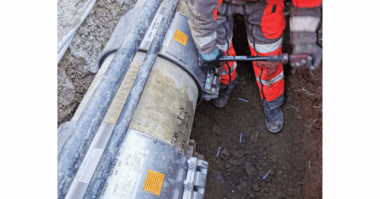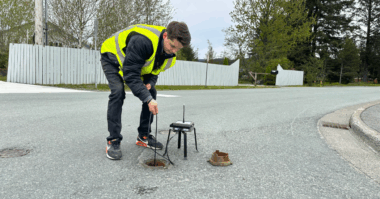Acoustic velocity testing saves on unnecessary pipe replacement and identifies the
hidden truths
The City of Gresham, Oregon is a suburb directly east of Portland, with over 100,000 residents and approximately 250 miles of water mains. The City recently embarked on the largest street reconstruction program in Gresham’s history to rebuild deteriorated residential streets. With numerous water mains approaching the end of their design life, the City also implemented a targeted pipe replacement program.
Since the age of a pipeline alone is not a reliable indicator of failure rates, the City was looking for a means to determine the comparative life of its pipe assets. Gresham was specifically in need of a testing strategy that worked on cast and ductile iron mains, which make up the entirety of the system. The City chose to do acoustic velocity testing using Echologics® ePulse® condition assessment technology.
This technology was used on both cast iron and ductile iron mains of all sizes in two programs:
- The first set of water mains tested were buried under roads planned for reconstruction within the next five years. The goal was to determine if the pipes had another five or more years of service life remaining, as a main break before that time would require repaving the street a second time – a costly expenditure.
- The second set of water mains are tested on an annual basis. These pipe condition measurements are being used for long-term asset management planning. By measuring the remaining wall thickness of its buried infrastructure, the City can assign a likelihood of failure (LOF) to these mains, as well as make an educated guess for the LOF of untested mains.
“A big plus for using the ePulse technology is that it can be utilized at the surface without the need to enter the pipe or affect the flow of water to customers. This non-invasive approach is ideal for economically covering a large area of the system in a short amount of time” said Wendy Andaya, Civil Engineer for Gresham City.
The field crews placed two sensors along the water main section that was identified to be tested. The connection points themselves can be anything that is hydraulically contacting the water main, such as a gate valve operating nut or a pothole to the pipe itself. Inline valves are preferred if present, but hydrant isolation valves also make a great connection point.
Using the ePulse technology, acoustic waves are induced inside the pipelines by either lightly flowing a hydrant or “tapping” on a pipe appurtenance such as a hydrant or valve. The acoustic waves are measured and analyzed to determine pipe condition by measuring the velocity of the acoustic wave. The waves cause the pipe wall to “flex” on a microscopic level, affecting the speed of the wave being detected by the sensors.
Thicker pipe walls are resistant to this pipe flexing, causing the acoustic wave to travel faster within pipes in good condition. In contrast, slower waves indicate pipe wall degradation and internal/external corrosion. Using the captured data, Echologics field engineers apply advanced algorithms to calculate the average minimum remaining wall thickness of the measured pipe segment without ever entering the pipe itself.
Figure 1 illustrates the structural wall thickness that is being measured for each pipe segment.
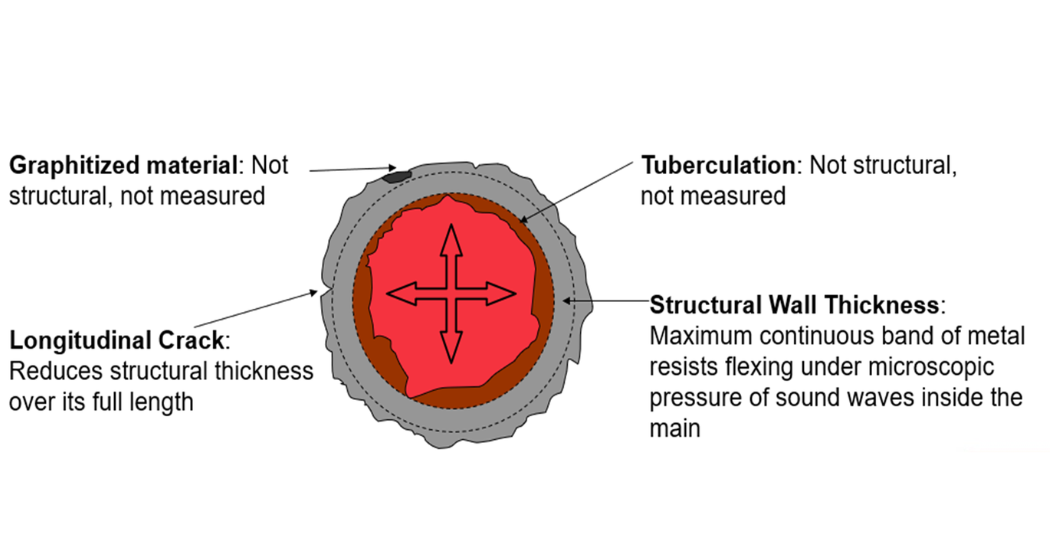 Figure 1: Structural Thickness Measurement
Figure 1: Structural Thickness Measurement
By applying pipe degradation data that Echologics has collected over thousands of miles of condition assessments, the engineering team is capable of estimating the time before a pipe reaches the criticality for probability of failure. “This is precisely the type of real-world information that we needed to expand our replacement program” said Wendy. By using the measurement of the pipe wall thickeness, the City was able to make better informed decisions on which pipes should be replaced next.
Table 1 shows a Gresham ePulse testing report. The wall loss measurement and Remaining Service Life (RSL) calculations are shown in the rightmost columns. It is interesting to note that the oldest pipes in this table are not the most degraded, illustrating how replacement programs based solely on age may not always be effective.
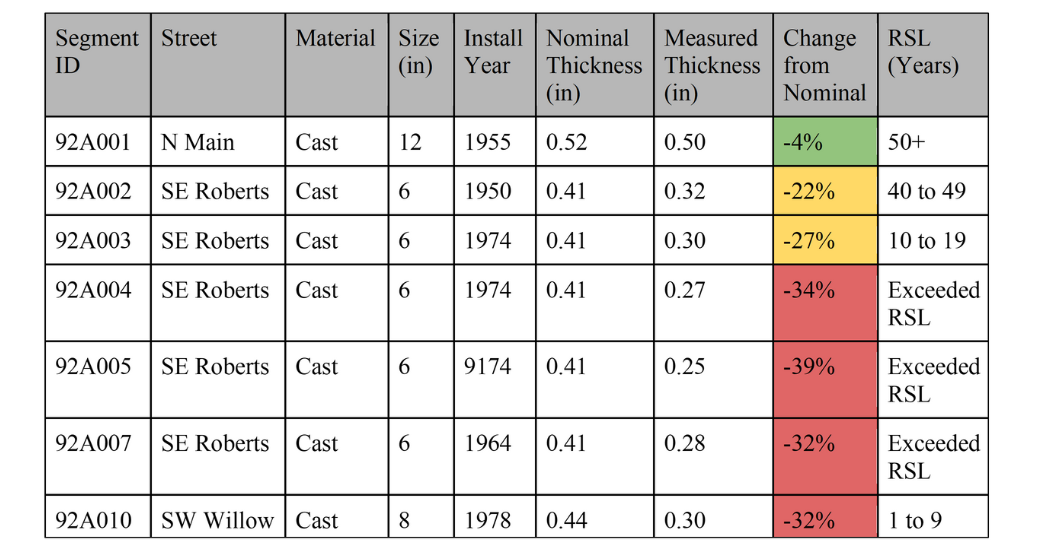
Table 1: Excerpt of the City of Gresham ePulse Data
Gresham created its own rating system for ductile iron life expectancy based on the degradation level found through the acoustic testing. By combining the provided life from the cast iron segments and its calculated estimates for the ductile iron segments, the City was able to create a likelihood of failure (LOF) for each of the pipes that were tested in its system. These LOF values provided the framework for the city’s pipe replacement and asset management programs that will both prolong the useful life of these assets and save money for decades to come.
The City used the ePulse acoustic pipeline assessment, along with other existing data, to prioritize replacement of mains within its limited budget. A goal of having the mains last at least 10 years was set, to avoid the 5-year paving moratorium plus an additional 5 years. For cast iron mains, those that had either surpassed their life expectancy, or had less than 10 years remaining, were considered for replacement. Ductile iron mains did not have the same level of data available, but the pipes could be prioritized from a measured thickness and calculated pipe wall loss. Several other factors were considered during this process, including the history of main breaks, pipe diameter and age of each pipe.
“The biggest realization of this testing was the significance of pipe class,” said Wendy.
Ductile Iron mains vary in quality with more susceptibility to corrosion
In the 1970’s the City first switched from cast iron pipes to ductile iron pipes. Initially Class 50 ductile iron pipe was installed. These water mains had the pipe wall thickness necessary to withstand the forces on the pipe, but offered very little allowance for corrosion. By the 1980’s the City had switched to Class 52 ductile iron pipes, which are far more durable than Class 50 due to their increased allowance for corrosion. Knowing the individual thicknesses of these relatively thin-walled Class 50 pipes was particularly important, since even a small amount of corrosion posed a risk for catastrophic failure.
Past anecdotal experience has also suggested that mains in Gresham primarily break due to improper bedding. With proper bedding, the relatively non-corrosive soils in the Gresham area allow old mains to comfortably remain in service for extended periods of time. The increased risk from the thin-walled Class 50 ductile iron mains, paired with the potential for increased corrosion from improper pipe bedding, posed a high risk of main breaks. Acoustic testing allowed these problematic mains to be located and replaced before they broke.
Cast Iron mains last longer
Testing also revealed many of the Class 50 ductile iron pipe from the 1970’s was in worse condition than cast iron that was much older. The cast iron mains are thicker, and therefore more resistant to breaking from corrosion. From the testing, some of the oldest cast iron mains were even found to be thicker than expected. Although the cast iron mains are still a concern, as the City collects more data the pipes are prioritized more effectively by type and age.
To show the effects of this condition assessment, a comparison between replacement strategies was done. In the first two years of testing, over 35 miles of pipeline was acoustically tested. Figure 2 shows the results that different replacement strategies would have system wide, focusing on 1.5 miles of replacement within two years.
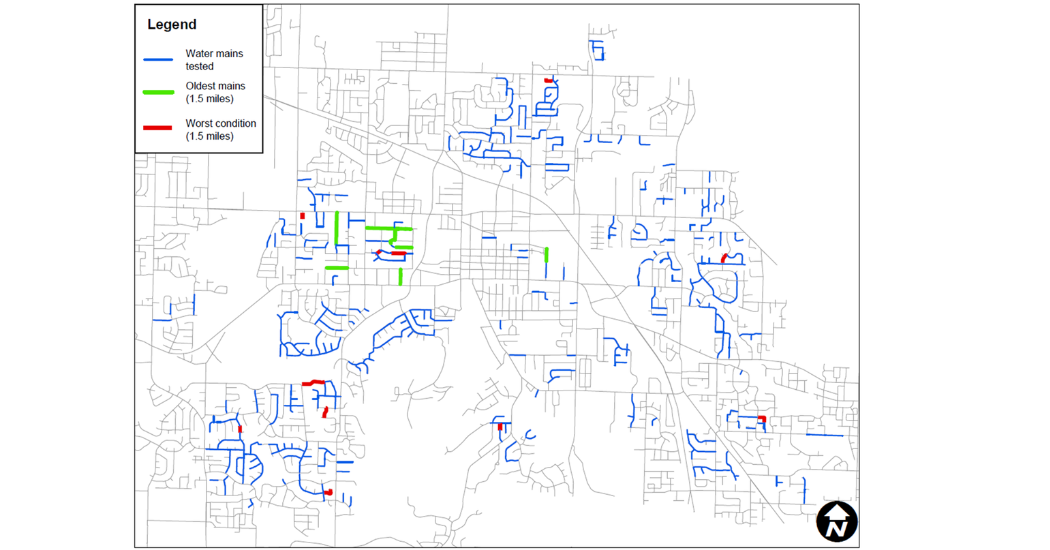
Figure 2: Water Main Replacement Comparison
The green lines in Figure 2 show replacement using the basic system of replacing the oldest mains first. The red lines represent mains that the ePulse condition assessment identified with over 30% pipe wall loss, indicating a poor condition and the highest need for replacement. As illustrated in this Figure, there is no overlap in the mains to be replaced with these two methods. If the City had replaced the oldest mains without further analysis, many poor conditioned pipes would have remained in service. These pipes left in the ground would have been at increased risk of failure and the pipes that were removed could have lasted several more years.
Records of main breaks in Gresham prove that 40-year-old water mains break just as often as 80-year-old mains. However, age is still an important factor. Several, but not all, of the oldest mains ended up being replaced as a result of this process. Having additional data to differentiate between the conditions of the oldest mains in the system allowed the City to use its funds more effectively.
“We have realized many benefits from utilizing the ePulse acoustic testing technology for pipe main wall thickness that enabled us to identify which water mains were in the poorest condition and focus on replacing only those. In doing, so I think we have saved ourselves from a few emergency pipe repairs,” said Wendy.
Looking toward the future, the City of Gresham will be able to use the same thickness information for asset management. Water mains are prioritized considering condition and their history of main breaks, to provide a LOF that can be used in traditional asset management rankings.


